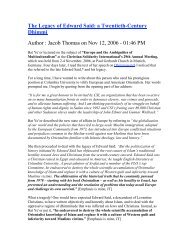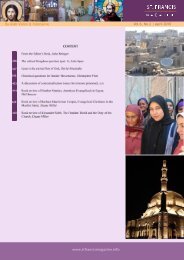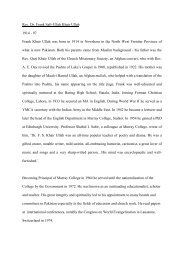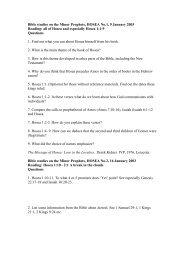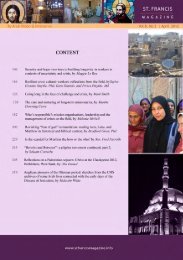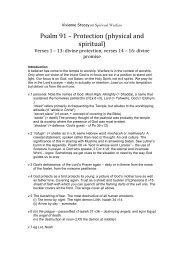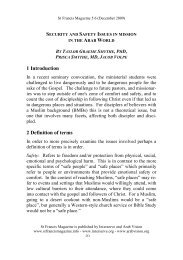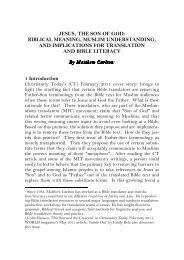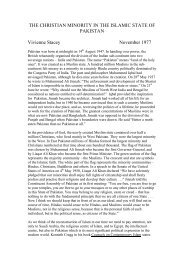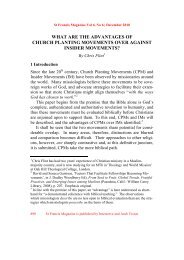download the pdf - St.Francis Magazine
download the pdf - St.Francis Magazine
download the pdf - St.Francis Magazine
You also want an ePaper? Increase the reach of your titles
YUMPU automatically turns print PDFs into web optimized ePapers that Google loves.
<strong>St</strong> <strong>Francis</strong> <strong>Magazine</strong> Vol 8, No 4 | August 2012<br />
& Bahrain (560,000); 4) Iraq (250,000); 5) Germany (110,000); 6)<br />
Central & South America & O<strong>the</strong>r Parts of <strong>the</strong> World (100,000); 7)<br />
United Kingdom (80,000); 8) Canada (75,000); 9) France (62,000);<br />
10) Australia (60,000). 12<br />
Behjati-Sabet and Chambers fur<strong>the</strong>r explain that Iranians, who<br />
migrated in <strong>the</strong> 1980s, did so under unbearable living conditions,<br />
religious and political persecution, against <strong>the</strong>ir will, and under<br />
tremendous pressure. These conditions typically make <strong>the</strong> process<br />
of adjustment and integration slow. However, <strong>the</strong> majority of Iranians<br />
residing in Canada came from large urban areas and belong to<br />
upper and middle-class families who are relatively familiar with<br />
Western education and values (Behjati-Sabet and Chambers 2005,<br />
128). Many Iranians in <strong>the</strong> United <strong>St</strong>ates came for social, political<br />
or religious reasons; <strong>the</strong>refore, <strong>the</strong>y are unlike many immigrants in<br />
search of economic opportunities. These Iranians did not isolate<br />
<strong>the</strong>mselves and have excelled in business and education.<br />
Contrary to <strong>the</strong>ory of exiles, which identifies exiles from lower<br />
educational and occupational backgrounds, “Iranian exiles are<br />
among <strong>the</strong> elite compared to o<strong>the</strong>r recent refugees” (Bozorgmehr<br />
1998, 17). Iranians tend to be relatively economically well-adjusted<br />
and preoccupied with <strong>the</strong>ir homeland, as exemplified with <strong>the</strong>ir media<br />
production that is beamed into Iran, as opposed to ethnic groups<br />
that import media programming from <strong>the</strong> country of origin. This<br />
same preoccupation is also found within <strong>the</strong> churches that produce<br />
programming destined for Iran.<br />
The ethnic diversity of Iranians has caused sociological researchers<br />
to coin a new term, “internal ethnicity” (Bozorgmehr 1998, 17),<br />
which is <strong>the</strong> diversity of Iranians which includes Muslims, Armenians,<br />
Assyrians, Bahais, Jews, and Zoroastrians. Research has noted<br />
that “Armenian, Bahai, Jewish, and Muslim Iranians in Los Angeles<br />
associate with <strong>the</strong>ir Iranian co-religionists more than <strong>the</strong>y do with<br />
o<strong>the</strong>r Iranians” (Bozorgmehr 1998, 18).<br />
12 The Persian Diaspora of Worldwide Persian Outreach found at<br />
http://www.farsinet.com/pwo/diaspora.html.<br />
<strong>St</strong> <strong>Francis</strong> <strong>Magazine</strong> is a publication of Interserve and Arab Vision 414


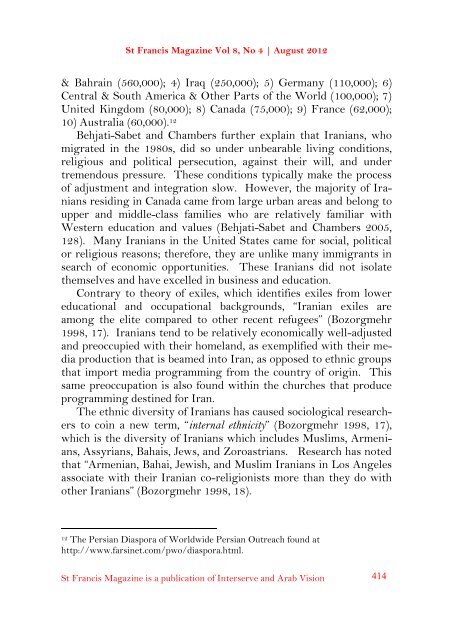

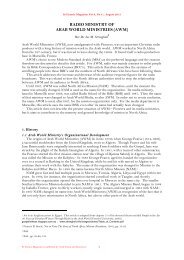
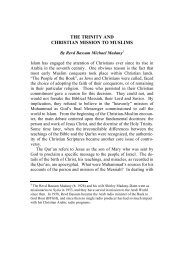
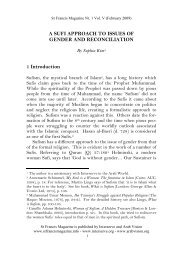
![Reflections on Surah Fatiha and the Lord's Prayer[1] - St.Francis ...](https://img.yumpu.com/49377951/1/184x260/reflections-on-surah-fatiha-and-the-lords-prayer1-stfrancis-.jpg?quality=85)
